Airborne Diseases
Airborne diseases are illnesses caused by pathogens such as bacteria, viruses, fungi, or other microorganisms that are transmitted through the air. These diseases can spread when an infected individual coughs, sneezes, talks, or even breathes, releasing tiny respiratory droplets containing the infectious agents into the air. Airborne transmission presents a significant challenge for public health, as it allows diseases to spread rapidly and efficiently, particularly in crowded or poorly ventilated environments. Prevention measures such as wearing masks, practicing good respiratory hygiene, maintaining adequate ventilation, and vaccination play crucial roles in controlling the spread of airborne diseases and protecting public health. Additionally, timely identification, isolation, and treatment of infected individuals are essential for preventing outbreaks and minimizing the impact of these potentially serious illnesses on communities.

Francis J Castellino
University of Notre Dame, United States
Ranjan Ramasamy
ID-FISH Technology, United States
Saurabh Chattopadhyay
University of Kentucky College of Medicine, United States
Rico Leonardo Lizbinski
Northern Light Health, United States
Sasha Leibholz
New York Presbyterian Columbia/Cornell, United States
Lauren Gruffi
New York Presbyterian Columbia/Cornell, United States



Title : Pathogen-derived noncanonical epitopes: Are they valuable targets for novel vaccinations and shall we be concerned about autoimmune responses?
Michele Mishto, Francis Crick Institute, United Kingdom
Title : Bioterrorism through the ages: Historical perspective, emerging threats, and medical countermeasures
Claudia Ferreira, Sorbonne University, France
Title : Changing population immunity to COVID-19 in the context of infection, vaccination, and emerging SARS-CoV-2 variants
Ranjan Ramasamy, ID-FISH Technology, United States
Title : Extensively drug-resistant bacterial infections: Confronting a global crisis with urgent solutions in prevention, surveillance, and treatment
Yazdan Mirzanejad, University of British Columbia, Canada
Title : Measles vaccination coverage indicators in 2023 and advance towards measles elimination and eradication by 2030
Pedro Plans Rubio, College of Physicians of Barcelona, Spain
Title : Severe influenza and other related respiratory infection cases during Omicron era in Japan
Masafumi Seki, Saitama Medical University International Medical Center, Japan